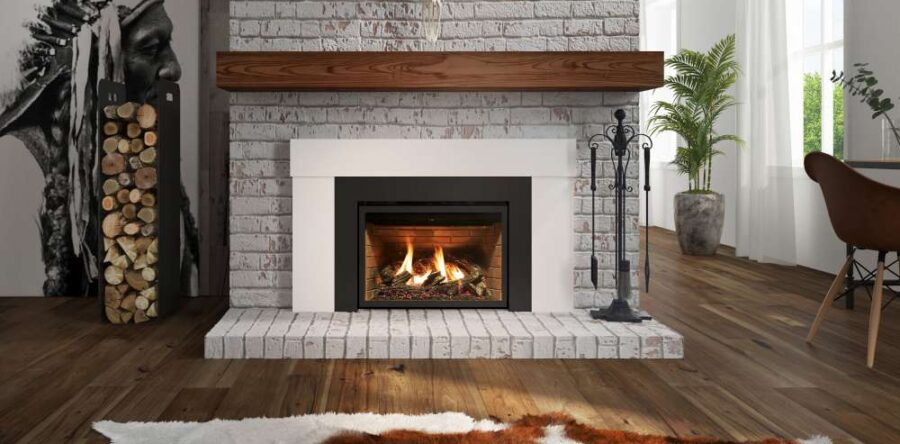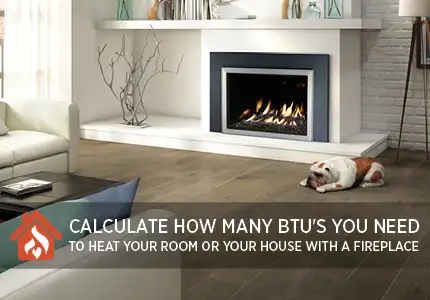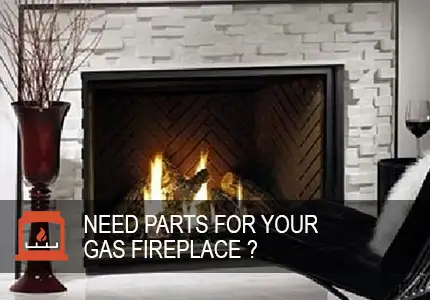A fireplace insert is designed to be installed into an existing wood burning fireplace. A fireplace insert is never to be built into a 2×4, framed wall. An insert is a fantastic way to upgrade an old, inefficient, energy wasting masonry or zero clearance fireplace. It can solve several problems for you and will provide some serious heat for your home. Expect efficiencies in the mid-80’s range for a new insert vs single digits for an old, opening burning fireplace.
But are they difficult to install? And, how do they work? This article will give you a better understanding of how an insert functions and the benefits of installing one in your home.
GAS INSERTS
Gas fireplaces inserts come in several sizes. For the sake of simplicity, let’s call them small, medium and large. So, depending on the dimensions of your fireplace, your WE LOVE FIRE dealer will have a few models that will be a good fit.
Gas inserts are sealed combustion units, meaning they get their air for combustion purposes from the outside, not air from inside the house. When a gas insert is installed, two flexible aluminum liners are positioned in the chimney. One of these liners brings air into the unit for combustion to occur. The other liner is used to expel the by-products of combustion out of the insert. Air is coming in on one and the exhaust gases are leaving on the other liner.
If there is a damper in the fireplace, it must be removed or permanently disabled to prevent it from damaging the aluminum liners.
There are literally dozens of optional fronts available for a gas insert. Styles, colors and materials that reflect your home’s decor and lifestyle are readily available for any size gas insert.
The control on a gas fireplace insert is typically done with a remote control. Some remotes simply turn the unit on and off. Other remotes feature multi-functions, such as adjusting flames patterns, maintaining a constant room temperature, adjusting the effects of accent lighting or varying the speed of the blower fan.
Other popular options on a gas insert include media choices. The ‘logs’ in a gas fireplace insert do not have to be ‘logs’ anymore! Driftwood, glass beads or river stones can give a unique look and feel to the fire. And optional refractories (that is, the sides and back of the firebox) can match the fireplace brick or stone or provide a mirrored, reflective enhancement of the flames.
A gas and electric line are needed for a gas insert to function. Ideally, both are installed within the firebox, so neither will be showing on the hearth. It looks much better if the electric and gas supply can be installed via a clean-out from the basement or brought into the side or bottom of the fireplace without being seen from the family room.
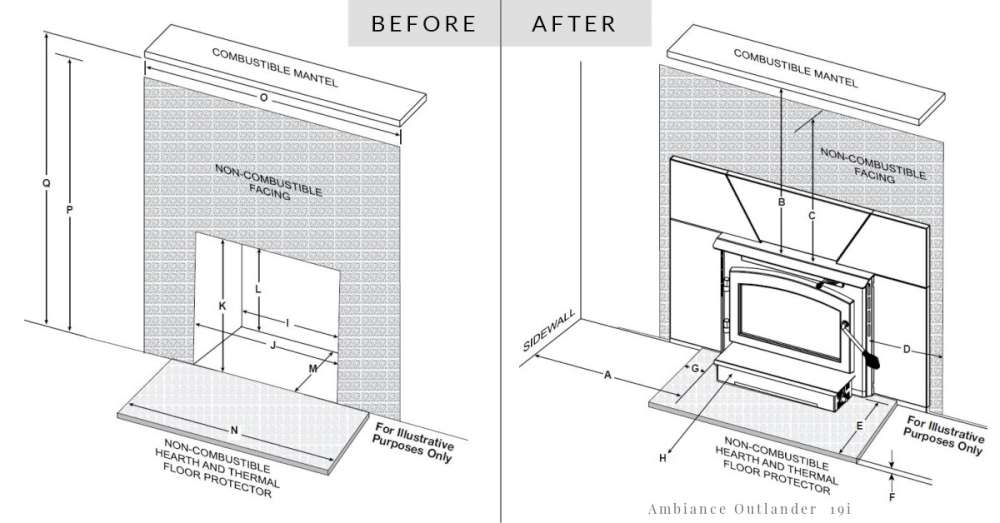
WOOD BURNING INSERTS
A wood burning insert looks like a free-standing wood burning stove, but without legs or a pedestal base. This ‘stove’ comes in several sizes, depending on the size of the fireplace. A wood burning fireplace insert is slid into the fireplace opening. A six-inch stainless-steel liner is installed in the existing chimney to create the draft and remove the smoke and by-products of burning wood. This six-inch stainless liner is sized to match the flue collar on the insert and should run up the entire height of the chimney.
Incidentally, some of the trickiest installation work that’s done is to install a wood burning insert. Picture this: try to position a 400+ pound insert in front of the fireplace. Then, slide it across the hearth (without damaging the stone or tile or marble) and then into the firebox while trying to snake a 6” stainless-steel pipe through the damper and securing it to the flue collar can be an extremely difficult project!
Unlike a gas insert, wood burning inserts will use room air for combustion. The amount of combustion air is carefully monitored by the air control on the insert. Specially engineered and designed ‘re-burn’ systems on today’s highly efficient EPA certified inserts, will actually burn most of the by-products of combustion. With properly seasoned wood, you will notice very little smoke coming out of the chimney. Secondary burn tubes or catalytic combustors have made today’s wood burning inserts (and stoves) incredibly friendly to the environment.
There will be a little finesse needed when learning how to control the heat from a wood insert. More air to the fire means more active flames and more heat output. Less air means lower flames and less heat output, but longer burn times with a load of wood. You’ll get the hang of it quickly!
Options with wood burning inserts may include different door styles and a blower fan. Since most inserts are designed with a convective air chamber, your WE LOVE FIRE expert will recommend an appropriate fan. They’re standard on many models but if not, spring for the optional fan. They’re worth it. Door styles may be another option on a wood burning fireplace insert.
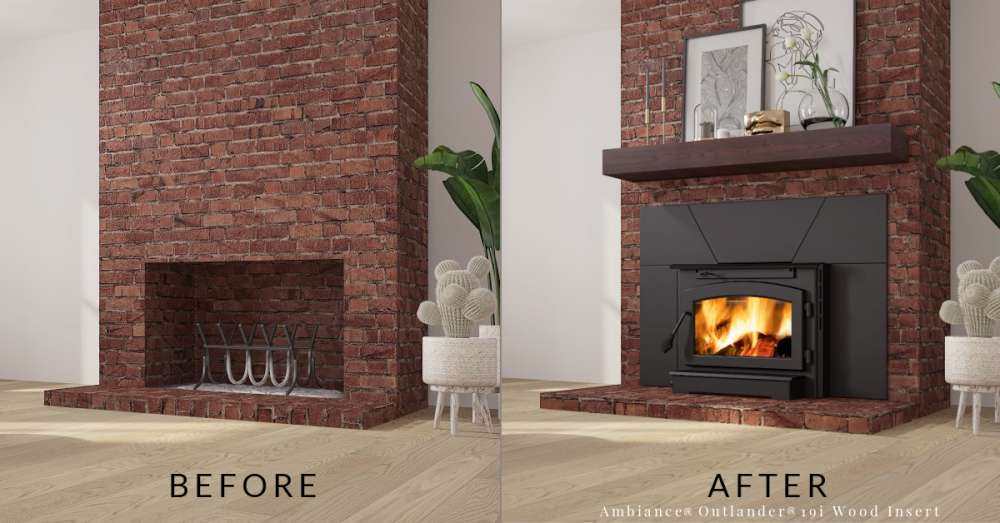
PELLET INSERTS
A pellet insert performs just like a pellet stove. Pellets are held in a storage bin and the ‘feed rate’ is set depending on the heat output that’s needed. An electric line powers the small motors for the auger system, blower fan and the exhaust fan.
Since we’re burning a solid fuel, we’ll need to reline the existing chimney with a stainless-steel liner for a pellet insert to function properly. However, most pellet inserts will require a 3” or 4” stainless liner, not the 6” liner that a wood burning insert needs.
A remote control with a pellet insert is standard on most models. The remote will allow you to adjust the feed rate. The faster you feed the pellets through the system, the more heat. The slower the feed rate, the longer the bin full of pellets will last and less heat will be delivered.
ELECTRIC INSERTS
An electric insert is easy to operate and simple to install. Since no fuel is actually being burning, there is no need for any type of liner up the existing fireplace chimney. Often, the most time-consuming part of electric projects is physically getting the electric line into the fireplace. Then, just slide the electric model into the fireplace and plug it in!
Controlling an electric model is easy. Remotes come with each unit and allow you turn the heating element on and off, adjust the lighting effects and the fan speed.
SURROUND PANELS
Regardless of fuel type, decorative panels will surround a fireplace insert. These panels are meant to give the insert a nice, clean, finished look by eliminating the space between the insert itself and the facing material of the fireplace. Surround panels are often made of steel, but depending on the model, might be cast iron. The panels come in several standard sizes but are often customized to accommodate unusual sizes, arches, or corner fireplaces.
CLEARANCE REQUIREMENTS
We should mention that following clearance requirements from the manufacturer of inserts is critical. Details of necessary clearances to wood mantels, side trim wood moldings and hearth requirements will be specified in the insert’s manual. Pay particular attention to mantels and the hearth, especially for those inserts that may protrude forward onto the hearth several inches.
Getting an insert certainly is a good option to make the most out of your open masonry fireplace and will definitely heat your space better! Your local We Love Fire expert will be happy to give you personalized advice to get your project moving forward!
